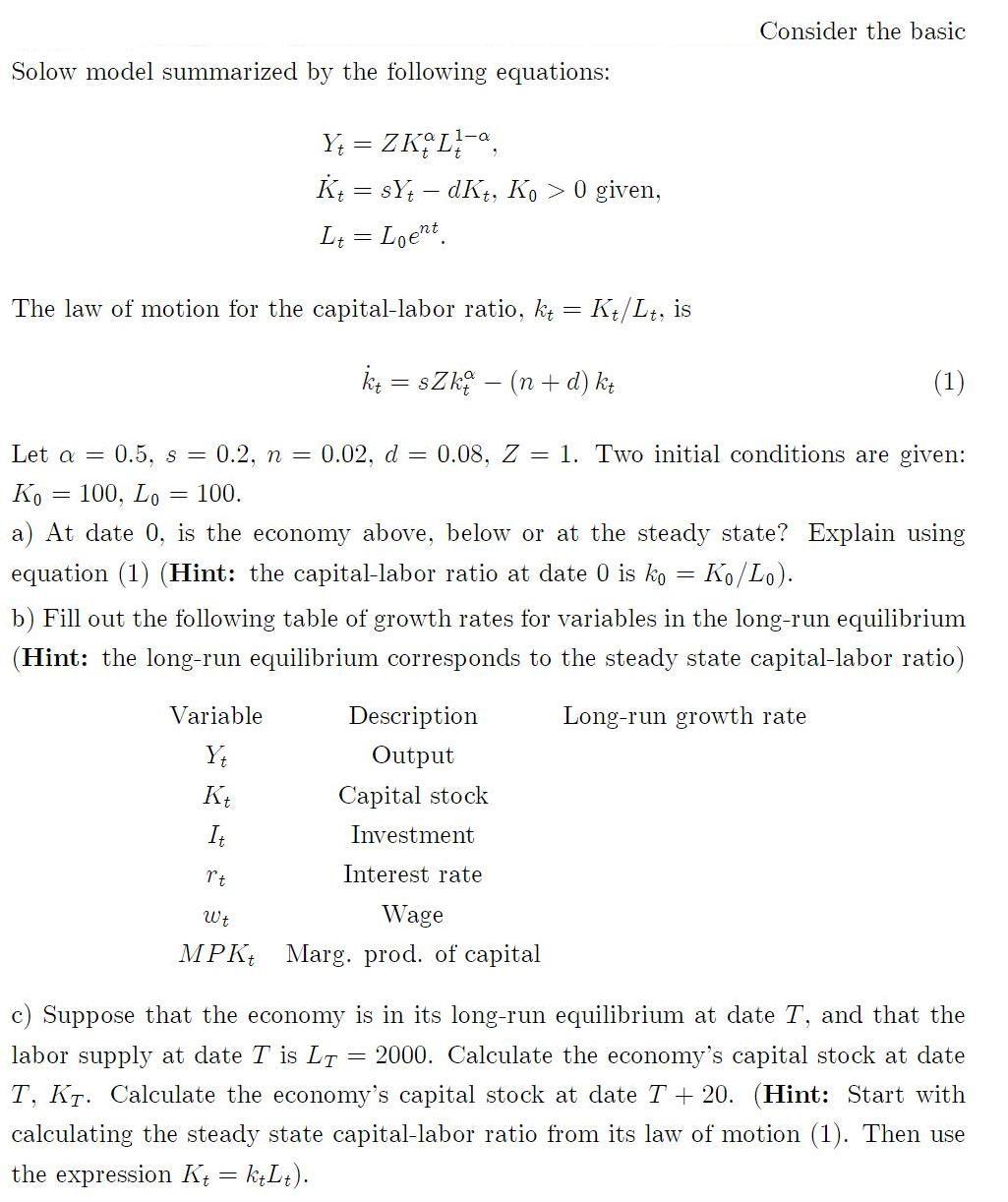Answered step by step
Verified Expert Solution
Question
1 Approved Answer
Consider the basic Solow model summarized by the following equations: Y; = ZKL-, 1-a K = sY; dK, Ko > 0 given, L =

Consider the basic Solow model summarized by the following equations: Y; = ZKL-, 1-a K = sY; dK, Ko > 0 given, L = Loent. The law of motion for the capital-labor ratio, k = Kt/Lt, is ki = sZk (n+ d) kt (1) Let a = 0.5, s = 0.2, n = 0.02, d 0.08, Z = 1. Two initial conditions are given: Ko = 100, Lo = 100. a) At date 0, is the economy above, below or at the steady state? Explain using equation (1) (Hint: the capital-labor ratio at date 0 is ko = Ko/Lo). b) Fill out the following table of growth rates for variables in the long-run equilibrium (Hint: the long-run equilibrium corresponds to the steady state capital-labor ratio) Variable Description Long-run growth rate Output Capital stock It Investment rt Interest rate Wt Wage Marg. prod. of capital c) Suppose that the economy is in its long-run equilibrium at date T, and that the labor supply at date T is LT = 2000. Calculate the economy's capital stock at date T, KT. Calculate the economy's capital stock at date T + 20. (Hint: Start with calculating the steady state capital-labor ratio from its law of motion (1). Then use the expression K = k;L;). %3D
Step by Step Solution
★★★★★
3.46 Rating (153 Votes )
There are 3 Steps involved in it
Step: 1
Answer A standard Solow model predicts that in the long run economies converge to their steadystate equilibrium and that permanent growth is achievabl...
Get Instant Access to Expert-Tailored Solutions
See step-by-step solutions with expert insights and AI powered tools for academic success
Step: 2

Step: 3

Ace Your Homework with AI
Get the answers you need in no time with our AI-driven, step-by-step assistance
Get Started


